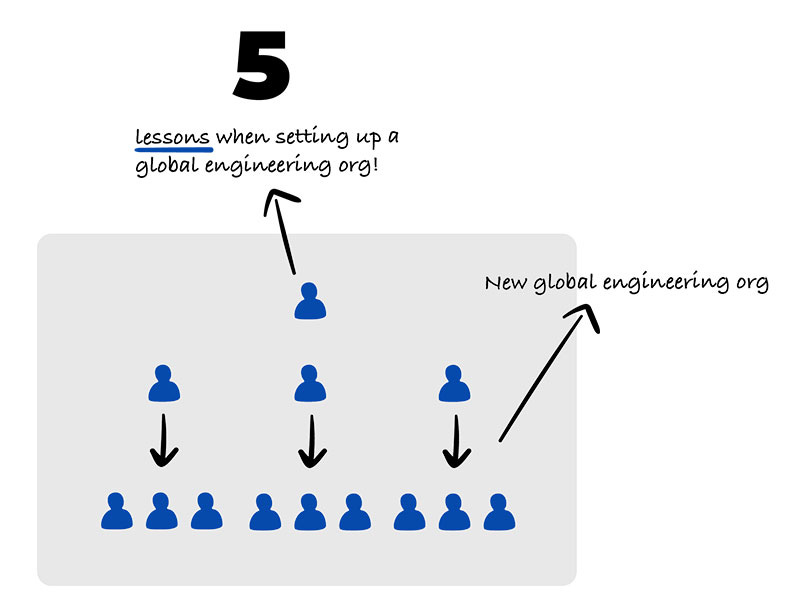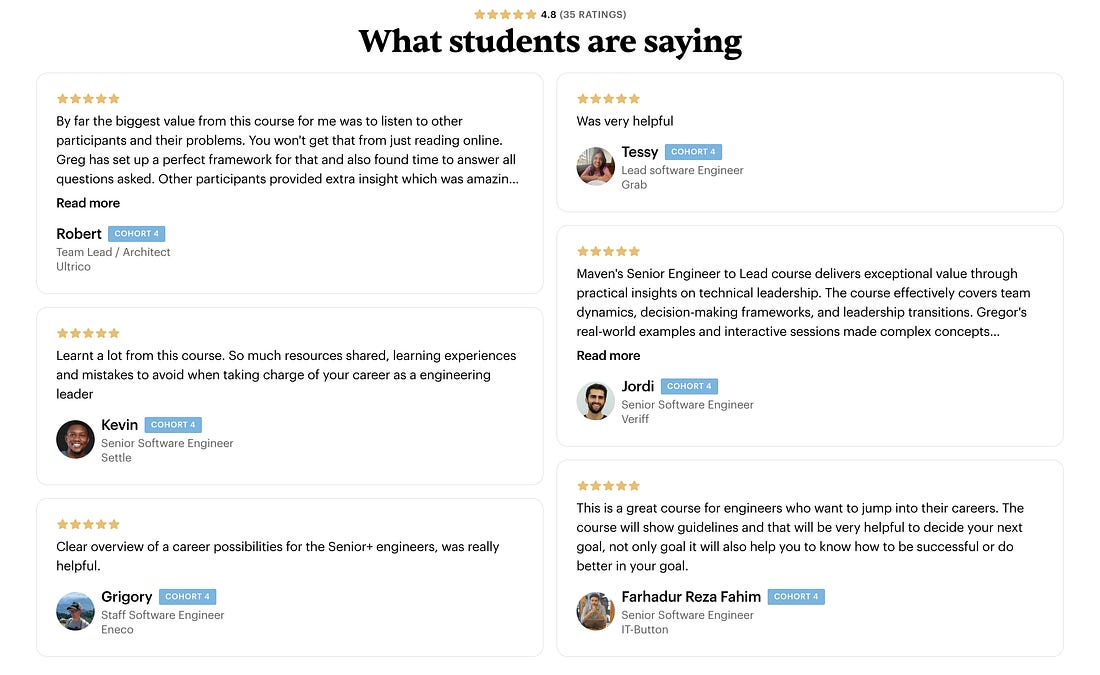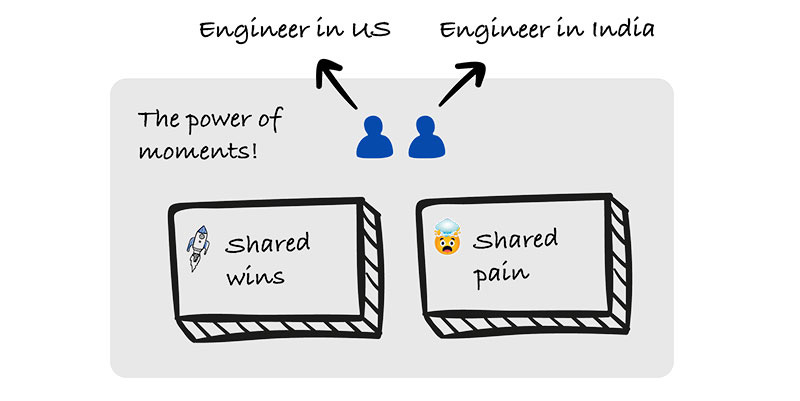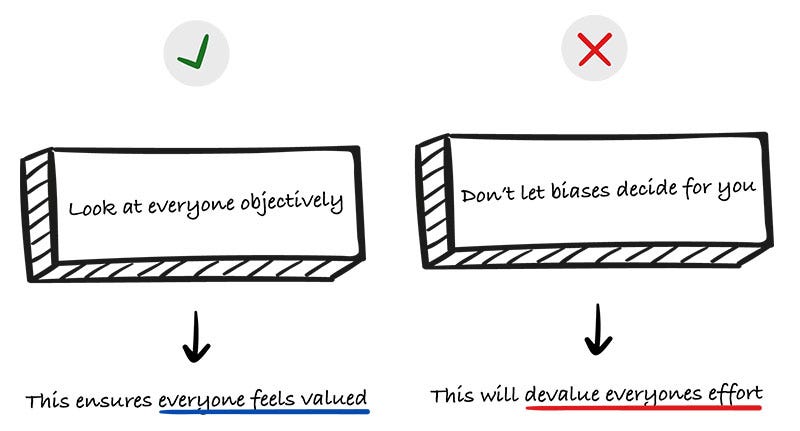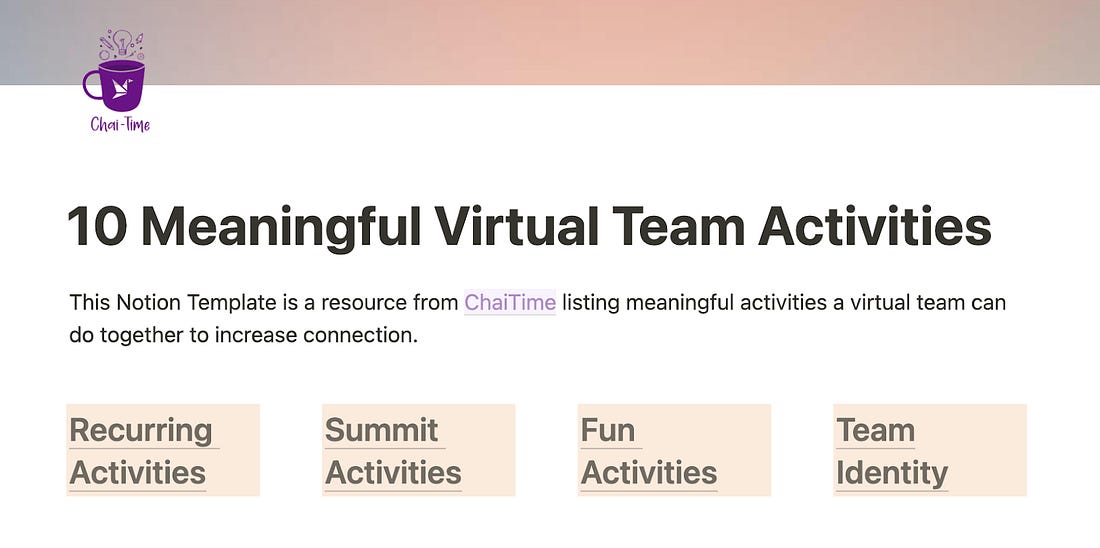5 lessons learned setting up a global engineering org at Google
- Gregor Ojstersek and Chaitali Narla from Engineering Leadership <gregorojstersek@substack.com>
- Hidden Recipient <hidden@emailshot.io>
5 lessons learned setting up a global engineering org at GoogleLessons from setting up a large global organization during the pandemic!Senior Engineer to Lead: Grow and thrive in the role (less than 10 days left to enroll)It’s getting close to the start of the March cohort of the course Senior Engineer to Lead: Grow and thrive in the role. We start on March 11! Here is what students of the last cohort are saying: If you wish to learn the competencies needed to grow and thrive in the Lead role (Tech Lead (Staff), Team Lead, EM), this would be a great course for you. Looking forward to seeing some of you there! Let’s get back to this week’s thought. IntroThe number one misconception that people may think is that adding new people to the team will make the progress linearly better. I’ve formed and scaled many different teams and orgs and it’s never been the case where adding a new person or a new team would increase productivity relative to how many new people we add. Especially not in the beginning, but with the right approach we can optimize the productivity and ensure that with every new person and the team that we add, there will be increase of business value. Things that help with this the most? It’s all about creating a good culture, inspiring teamwork, creating a good onboarding experience + empowering and uplifting your people. Lucky for us, we have Chaitali Narla with us today as a guest author. She is a former Engineering Director at Google and today, she is sharing the lessons learned when she was tasked at Google to set up a whole new global org. Let’s go straight into it. Chaitali, over to you! In January of 2020, I hit an exciting milestoneMy leadership gave me the green light to hire and grow a team of 30 in Bangalore, India. Until then, I had only led a team on the US West Coast and I felt excited to learn how to build and manage a team in another country. I did my homework to prepare for this opportunity → I talked to my coach, got mentorship from people who had done this before, and read recommended books. A month later, I had to make my own playbook. No one had done what I was about to attempt: building a new team halfway across the world during a pandemic. Everyone was working from home, and travel was impossible! Today, I’ll share five lessons for leaders of global organizations. Lesson 1: Create momentsI really like the Heath Brothers' books, especially The Power of Moments. This book explores how short, intense experiences can surprise us, lift us up, and even change who we are. I doubted that the usual "assign a buddy" system would help our new hires ramp up while working from home during the pandemic. Especially when their buddy would be in a timezone 12 hours away. We made a list of starter projects for each quarter, then we paired every new hire in India with an experienced engineer from the US. Working together on projects this way created stronger moments of connection between them. Another example was creating moments of shared pain. We changed the team meeting time each month → This way, everyone could feel how tough it was to meet late at night or early in the morning. This built shared pain and empathy, leading to stronger bonds between both teams! Lesson 2: Repetition builds culture
As a leader, you need to know what ideas you want as the foundation of your culture, then you need to find many everyday moments to say or show those ideas. I realized early that to build an inclusive culture in my organization, we needed to change some practices from optional to necessary. Hand raises in video calls and notes shared after meetings were two practices. For a year or more, I asked for hand raises before speaking during meetings and I also requested written notes after each meeting. Another investment I made was doing frequent small group coffee chats. Keeping the group small → no more than 20 people, was key to fostering open dialogue. We rotated the timings for these as well to give everyone in the US and India equal opportunity to join. These chats were another channel to cultivate team culture. I began using “our global team” for the whole organization and for specific areas, I'd say “the US team” or “the India team”. This was instead of “the remote team” or “the offshore team”. Others caught on to this lingo, and it became part of our team culture over time! Lesson 3: Old tools, new purposeThe big time difference of about 12 hours and the unusual situation where no travel was possible made things tricky! It forced me to repurpose many of my old leadership tools. I have always been a delegation practitioner, but in this situation, I had to up that practice 10x! L. David Marquet’s Turn the Ship Around immensely helped me here. I talked about the Leader-Leader model and the “I intend to” approach with my leadership team and we began using it, especially for roundtrip decisions between India and the US. We invested time discussing the mechanics of implicit consent and explicit dissent and I knew we had adopted this model when I began waking up to messages like:
I could ignore most of these messages, but they also let me step in if I felt strongly. Another old tool that didn’t work during the pandemic was the “in-person leadership summit." My mentors suggested I bring my India and US leads together right after forming the new team, so we could share ideas and build connections. Without travel, we could only have a virtual “golden hour” video call in the early morning or late evening of either timezone. I turned to Priya Parker’s The Art of Gathering to design meaningful virtual meetings. We invested in short, meaningful activities to make the most of our limited time and I made a conscious effort to stay away from activities that would feel awkward or fake to the team. We formed stronger connections through these meetings than from a big summit. Lesson 4: Actionable empathyA key leadership principle for me is what I call “actionable empathy" → you won’t understand your team’s struggles until you experience them yourself. There was a power gap between my US and India teams. My US leads had easier access to me and other stakeholders because of the time zone advantage and with no travel possible, it was up to me to apply actionable empathy in this situation. One week, I bought room-darkening curtains for our guest bedroom and I marked my calendar as out-of-office and took a virtual trip to India.
Chai, samosas, and some Indian snacks helped make it feel more real! My virtual trip strengthened my ties with the India team and it also changed how both parts of my organization interacted. Another reason to pick that travel week was the virtual conference by Grace Hopper India (GHC). I got to attend a few of their sessions, which introduced me to some amazing women leaders. That enabled me to make many great hires, including a director later down the line! Lesson 5: Fight the biasesWe may want to think our performance reviews are fair, but they often reflect human biases. Biases in performance evaluations disproportionately impact those further away from the leadership epicenter and this happens due to availability bias. For example, we were reviewing candidates for Staff Engineer promotions and everyone recognized one candidate’s work. This person gave several tech talks and often connected with senior leaders and the other candidate did not seem to be very visible. They had fewer tech talks, and most senior leaders barely remembered speaking with them. I asked the group if visibility was a criterion in our job ladder → It wasn’t. This led us to discuss ladder attributes. We discovered that both candidates had strong technical contributions and they also mentored and led junior engineers. Plus, each was an expert in their field! The key difference between both candidates? Location! One was located on the US West Coast, and the other was located in India. Once we started looking closely, we realized something important. Our India-based Staff Engineer candidate gave three tech talks at 11 PM their time. That’s pretty impressive! If you run a global organization, act now to cut biases in performance reviews and promotions. This helps ensure that everyone feels valued! Leading a global team during the pandemic taught me important lessonsI learned how crucial it is to adapt your leadership style and I learned to focus on building connections and showing real empathy. My journey taught me how to build and lead larger organizations in many countries and the lessons I mentioned are scalable and suitable even for hybrid work. Notion Template: 10 Meaningful Virtual Team ActivitiesGregor here again! To learn further, Chaitali also created a Notion template, where you can find activities that help virtual teams to increase connection. And she has kindly given this template for free to Engineering Leadership readers for the next 30 days. Use the code: 6V5DRXI at the checkout or click the button below: Additionally, you can get this template and similar others for free by becoming a paid subscriber to her newsletter ChaiTime. Last wordsSpecial thanks to Chaitali Narla for sharing her insights and experience. Make sure to follow her on LinkedIn and also check out her newsletter ChaiTime, where she shares similar learnings from her 15+ career in the engineering industry. We are not over yet! Ace Your Big Tech Interviews with Proven StrategiesMy friend Prasad Rao, who has also been a guest author on the newsletter to the article From Engineer to Principal Solutions Architect at AWS with Prasad Rao, has just launched his online course! If you are looking to get better in Big Tech interviews, this might be a great course for you. He also gave a 10% discount to the Engineering Leadership readers, so use the code EL10 at the checkout to redeem it. Liked this article? Make sure to 💙 click the like button. Feedback or addition? Make sure to 💬 comment. Know someone that would find this helpful? Make sure to 🔁 share this post. Whenever you are ready, here is how I can help you further
Get in touchYou can find me on LinkedIn, X, Bluesky, Instagram or Threads. If you wish to make a request on particular topic you would like to read, you can send me an email to info@gregorojstersek.com. This newsletter is funded by paid subscriptions from readers like yourself. If you aren’t already, consider becoming a paid subscriber to receive the full experience! You are more than welcome to find whatever interests you here and try it out in your particular case. Let me know how it went! Topics are normally about all things engineering related, leadership, management, developing scalable products, building teams etc. You're currently a free subscriber to Engineering Leadership. For the full experience, upgrade your subscription. |
Similar newsletters
There are other similar shared emails that you might be interested in:
